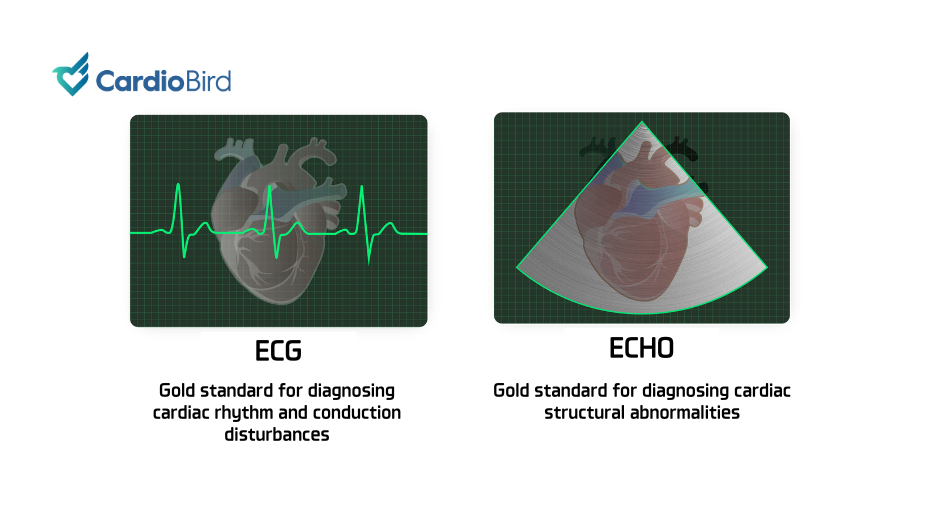Structure and Rhythm: The Complementary Roles of Echocardiography (Echo) and electrocardiography (ECG) in Veterinary Medicine
Estimated reading time: 2.2 minutes

Echocardiography excels in evaluating cardiac morphology and function. It enables veterinarians to measure chamber dimensions, assess wall motion, and detect abnormalities such as mitral valve disease or hypertrophic cardiomyopathy (HCM). Its widespread use is a testament to its diagnostic precision and the increasing availability of user-friendly ultrasound devices, making it accessible even in resource-limited settings. For many practitioners, echocardiography has become the go-to tool for cardiac evaluation, often leading to the question: Is ECG still necessary?
The Unique Role of ECG in Veterinary Practice
While echocardiography focuses on structural and functional abnormalities, ECG provides critical information about the heart’s electrical activity. This is particularly important for diagnosing arrhythmias, such as atrial fibrillation, ventricular tachycardia, or conduction blocks, which may not be apparent on echocardiography alone. However, the utility of ECG extends far beyond cardiac disease. In routine examinations, ECG serves as a valuable screening tool for systemic conditions that may affect the heart, such as electrolyte imbalances, metabolic disorders, or toxicities. For example, hyperkalemia or hypothyroidism can manifest as changes in the ECG tracing, providing early clues to underlying systemic issues.
ECG in Routine Examinations: Beyond Cardiac Disease
ECG is not just for heart disease cases; it is a versatile tool that can be integrated into general practice. During routine check-ups, ECG can help identify subtle abnormalities in heart rhythm or rate that may indicate systemic illness or stress. For instance, brachycephalic breeds or patients undergoing anesthesia can benefit from preanesthetic ECG screening and monitoring to detect arrhythmias that may arise due to respiratory compromise or drug effects. Additionally, ECG is a quick, non-invasive, and cost-effective test that can be performed during annual health screenings, especially in older patients or breeds predisposed to cardiac conditions.
The Synergy of Echocardiography and ECG
Echocardiography and ECG are not mutually exclusive; they are complementary. While echocardiography provides a detailed view of cardiac structure and function, ECG offers insights into the heart’s electrical activity and overall systemic health. Combining these modalities ensures a more comprehensive evaluation, leading to better diagnostic accuracy and patient outcomes. For example, a patient with heart disease may have normal echocardiographic findings in the early stages but could exhibit arrhythmias detectable on ECG, prompting earlier intervention.
Conclusion
Echocardiography has transformed veterinary cardiology, and its popularity among veterinarians is well-deserved. However, ECG remains an essential tool, not only for diagnosing arrhythmias but also for routine health assessments and systemic evaluations. By integrating both echocardiography and ECG into clinical practice, veterinarians can provide a more holistic approach to patient care, ensuring early detection and management of both cardiac and non-cardiac conditions.
References
Boon, J. A. (2011). Veterinary Echocardiography. Wiley-Blackwell.
Kittleson, M. D., & Kienle, R. D. (1998). Small Animal Cardiovascular Medicine. Mosby.
By embracing the dual approach of echocardiography and ECG, veterinarians can elevate the standard of care for their patients, ensuring comprehensive cardiac and systemic health evaluations.


